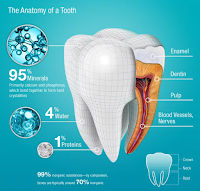Toothbrushing
Introduction
Tooth brushing is the most commonly recommended oral hygiene behaviour.
- It is the primary mechanical means for removing dental plaque, thereby assisting in the prevention of oral diseases including gingivitis and dental caries.
Duration and Frequency
It is widely recommended that patients brush their teeth with a fluoride toothpaste for a duration of 2 minutes twice daily.
- Brushing for a period of 2 minutes achieves clinically significant plaque removal, removing more plaque than when teeth are brushed for only 1 minute.
- Patients should also be counselled to divide each brushing session into 30 second segments for each quadrant of the mouth.
NOTE: Fluoride is anticariogenic, meaning it prevents tooth decay.
Toothbrushing Technique
In general, the toothbrush should be placed at the gumline at a 45° angle to remove plaque optimally at the gingival margin.
- Patients should apply gentle force to insert the toothbrush into the sulcus.
- The toothbrush should be moved in a vibrating motion in short strokes while remaining in contact with the sulcus.
- All surfaces of the teeth (inner, outer, and chewing surfaces) should be brushed during each session.
Once finished brushing, patients should spit out any excess toothpaste but do not rinse out the mouth immediately with water.
- By not rinsing, this leaves a thin layer of toothpaste on the surface of teeth, helping to protect them for longer.
Choice of Toothbrush
In general, look to use a toothbrush with a small head and soft bristles.- Soft bristles minimize the risk of gingival abrasion or injury during brushing. While medium bristles are effective at plaque and biofilm removal, they carry a risk of gingival damage. This risk can also be minimized by educating patients to apply gentle pressure when brushing and to avoid overly forceful brushing.
- Multilevel or angled bristles remove plaque more effectively than conventional flat-trimmed brushes.
- Studies of electric toothbrushes have shown statistically significant improvement in dental plaque removal when compared with a manual toothbrush, but the clinical importance of these findings remains unclear.
- In general, electric toothbrushes are likely more expensive, but some patients may find them easier to use.
Overall, patients should be encouraged to choose the toothbrush they prefer and will be able to use most consistently to promote adequate brushing practices.
NOTE: Toothbrushes should be replaced every 3 to 4 months, replacing more frequently if bristles are visibly frayed or matted.
Summary
Tooth brushing is primarily aimed at removing plaque, not just food debris.
- Therefore, it is essential to brush your teeth regularly, even when you have not eaten.
Hardbrushing and using a toothbrush with stiff, coarse bristles can wear down teeth and gums, leading to problems like gum recession and enamel wear, both of which are linked to tooth sensitivity.
External Links
- CHDA Position Paper on Tooth Brushing, 2006
- The effect of brushing time and dentifrice on dental plaque removal in vivo, 2009
- The efficacy of manual toothbrushes following a brushing exercise: a systematic review, 2012
- Toothbrushing methods to use in children: a systematic review, 2013
- The role of oral hygiene: does toothbrushing harm?, 2014
- An analysis of methods of toothbrushing recommended by dental associations, toothpaste and toothbrush companies and in dental texts, 2014
- Powered versus manual toothbrushing for oral health, 2014
- American Dental Association - Toothbrushes, 2019


Comments
Post a Comment